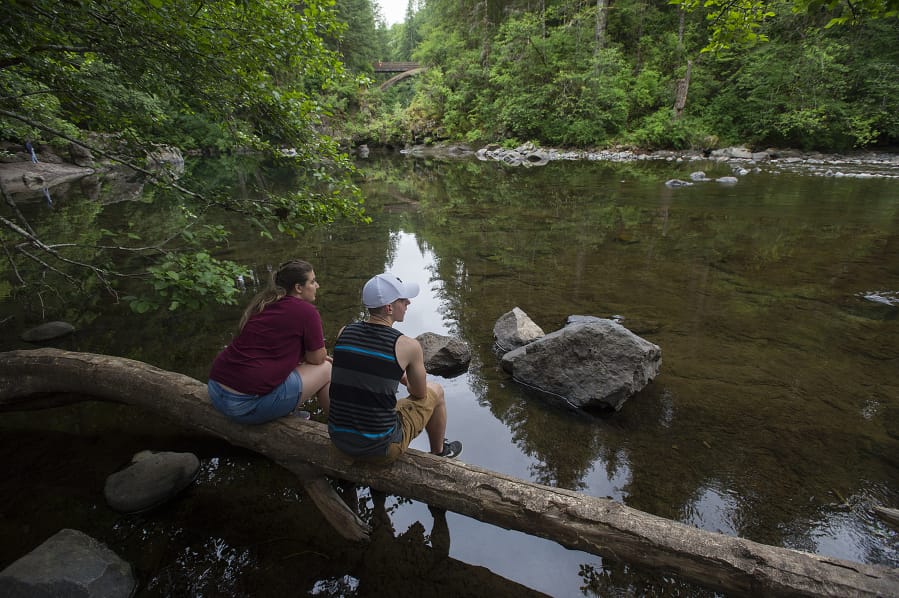It doesn’t take long to ruin a good thing.
In April, Southwest Washington was coming out of winter with a healthy mountain snowpack of around 125 percent above normal — a good sign for the upcoming dry season; but it only took a few weeks to dramatically reduce an entire winter’s worth of snow accumulation.
“It was those extreme temperatures through the whole month,” said Scott Pattee, a water supply specialist with the U.S. Department of Agriculture’s Natural Resources Conservation Service. “Once it started, it was a runaway.”
April was the third-wettest April in state history. May was not only the second warmest but also the 12th driest May on record since 1895. That put a huge dent in the mountain snowpack.
In May, snow measurement stations at Swift Creek, on the southern slope of Mount St. Helens, recorded a loss of 79 inches of snow, and nearby June Lake lost 72.
Warm, dry conditions in early June only made things worse in this region and throughout all of Western Washington, according to the National Drought Mitigation Center.
Vancouver saw a record high of 94 degrees Wednesday, 20 degrees hotter than normal. On the first day of summer, June 21, the Lower Columbia Basin had 57 percent of its normal snowpack for this time of year. Rapid snowmelt means less water in rivers and streams throughout the summer. The impact is already evident in some Southwest Washington waterways, said Department of Ecology water supply expert Jeff Marti.
“A number of our rivers are at below normal conditions — that’s especially true in Southwest Washington and on the Olympic Peninsula,” Marti said. “Your low-elevation, rain-dependent streams are very responsive to precipitation. Because it’s so dry, we’re seeing streams flowing at notably low levels.”
But, conditions on the ground are nuanced. Rivers with flows regulated by dams, such as the Lewis and the Cowlitz Rivers, are maintaining fairly normal flows because hydropower projects are required to release water for downstream fish. Rivers that rely on mountain runoff aren’t doing as well.
The East Fork Lewis River for example is in the bottom fourth percentile. That means the river flowed lower on Thursday than 96 percent of all June 21 measurements recorded in previous years. As of Thursday, the river was flowing at 98 cubic feet per second. That’s down from the average flow of 338 cubic feet per second.
Later this month, state and federal experts called on the Water Supply Availability Committee to meet at the end of the month to discuss the current situation.
Colby Neuman, a metrologist at the National Weather Service, said summer is already a low-precipitation time of year in Southwest Washington, so runoff and precipitation-dependent streams aren’t likely to fare any better in the next three months. Long-term forecasting is predicting a 40 chance of below-average precipitation for July, August and September.
Neuman said here’s a 50 to 60 percent chance this summer’s average temperature will end up in the 10 warmest years in a 30 year period.
“It’s really a flip of a coin whether we’ll be in the top third of the warmest years between 1981 and 2010,” he said. “There’s a 17 percent chance of ending up in the 10 coolest years. … We could still have a below average summer and end up in the bottom 10, it’s just the odds are looking less likely.”




